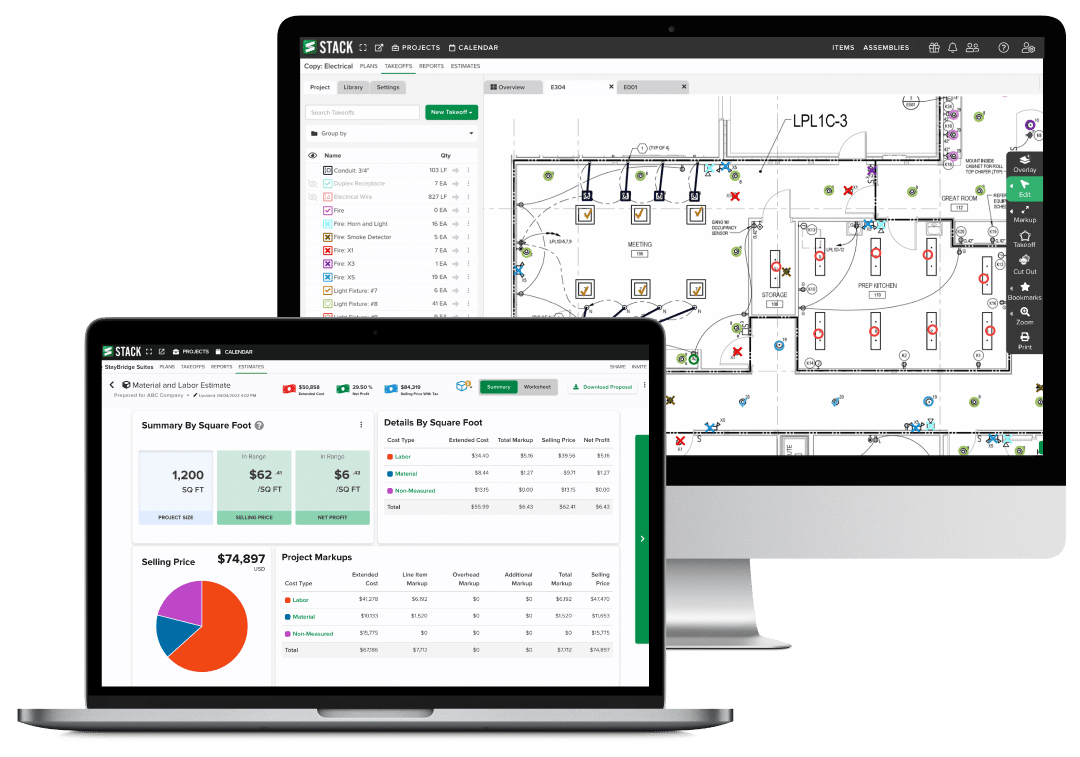Browsing the Intricacies of Electrical Estimating: Ideal Practices for Successful Bids and Budgeting
In the world of electric estimating, precision and insight are critical in safeguarding successful quotes and maintaining budget plans. As each project provides its unique set of variables and obstacles, mastering the art of evaluation calls for a delicate equilibrium of technological experience and tactical preparation. From browsing fluctuating material prices to executing cutting-edge technologies, the landscape of electrical evaluation requires a meticulous method to attain profitability and competitive edge. By untangling the complexities and welcoming ideal practices, experts in the area can place themselves for lasting success in a constantly developing market.
Recognizing Material Expenses
Understanding product prices is a basic element of precise electrical estimating in building projects. The cost of products stands for a considerable portion of the overall project expenditures and can considerably influence the competitiveness and profitability of a proposal. When approximating material costs, it is crucial to take into consideration variables such as the kind and quantity of products needed, current market value, possible variations in expenses, and any unique order or shipment charges that might apply.
To ensure specific estimations, professionals must remain informed concerning the current trends and growths in the materials market. Structure strong relationships with vendors can also give important understandings and potentially lead to cost-saving possibilities. Making use of specialized software application or tools created for material expense estimate can improve the procedure and enhance accuracy.

Accurately Estimating Labor Expenses
To make sure the financial feasibility of a construction job, exact estimation of labor expenditures is vital in determining the total costs included. Labor costs commonly constitute a considerable section of the total job budget, making exact evaluation essential for effective task completion within budget constraints. When approximating labor expenditures for an electrical task, elements such as the range of work, needed skill levels, project timeline, and labor rates should be carefully considered.
One trick element of precisely estimating labor costs is understanding the particular jobs associated with the project and the equivalent labor demands. Damage down the project right into specific parts and designate labor hours to each job based upon previous experience or industry requirements. In addition, think about any kind of potential difficulties or unforeseen situations that may affect labor performance and readjust the price quotes accordingly.
Collaboration with project managers, electric contractors, and other stakeholders can also provide valuable understandings right into labor needs and aid fine-tune the quotes. CE Estimating Melbourne. By integrating all appropriate elements and utilizing industry ideal practices, electric estimators can boost the precision of labor cost estimation and boost the total success of the job
Leveraging Technology for Estimation
Including innovative technological tools and software can dramatically enhance the process of estimating labor expenditures for electrical projects, boosting accuracy and performance in expense assessments. Electric estimators can take advantage of specialized software made for the market, such as Accubid, McCormick Systems, or ConEst IntelliBid, to automate the estimation of labor expenses based upon job requirements, products, and labor rates. These programs permit for the development of detailed quotes, including labor hours, product quantities, and various other project-specific elements, with resource accuracy and speed. In addition, cloud-based platforms like ProEst or Esticom make it possible for real-time partnership amongst employee, ensuring that all stakeholders have access to the most current details during the estimation procedure. By taking advantage of the power of innovation, electrical estimators can minimize errors, lower manual work, and generate more affordable bids, eventually raising their chances of protecting profitable jobs in today's requiring construction market.
Financial Threat Management in Bidding
Efficient economic threat management is essential for successful bidding in the check this site out affordable area of electric task estimation. Electrical service providers face different monetary dangers when preparing quotes for jobs, including imprecise price estimates, unforeseen project intricacies, and rising and fall product rates - CE Estimating. To reduce these dangers, specialists have to take on critical economic danger administration methods
One secret facet of economic danger administration in bidding is conducting comprehensive cost analysis. This entails carefully examining all job requirements, such as products, labor, overhead, and tools expenses. By accurately approximating these costs, professionals can minimize the danger of underbidding and potential economic losses.
One more essential approach is to integrate contingency strategies into the bidding procedure. Including backup funds in the bid rate assists support against unanticipated expense overruns or task delays. Contractors must also remain informed regarding market trends and product price changes to adjust their quotes accordingly.

Approaches for Competitive Rates
Provided the vital nature of exact expense analysis and critical monetary risk monitoring in bidding, a basic aspect to consider in making sure competitiveness is executing effective methods for pricing. Affordable rates approaches are important for electric estimators to stand out in the market while still keeping earnings.

Additionally, applying tiered pricing structures or supplying packed service plans can appeal to a wider range of customers with varying budgets and needs (Concept Electrical Estimating Melbourne). By providing options that accommodate various client sections, estimators can increase their opportunities of winning quotes and securing successful projects. Generally, a well-thought-out prices strategy is crucial for staying competitive in the electric estimating industry
Conclusion
To conclude, effective electrical estimating calls for a thorough understanding of product costs, accurate labor cost estimate, usage of technology, effective financial risk monitoring, and strategic affordable prices. By incorporating these finest methods right into the bidding process, service providers can boost their possibilities of remaining and winning bids within budget plan. It is necessary for electrical estimators to continuously improve their skills and remain upgraded on market patterns to navigate the complexities of estimating effectively.
Labor expenses typically comprise a considerable part of the complete task spending plan, making accurate evaluation critical for effective task completion within spending plan restrictions. When approximating labor expenses for an electrical job, variables such as the range of work, required skill degrees, project timeline, and labor rates should be meticulously considered.
Including innovative technical tools and software application can significantly improve the process of estimating labor costs for electric jobs, improving accuracy and effectiveness in cost evaluations. Electric estimators can leverage specialized software application developed for the market, such as Accubid, McCormick Solutions, or ConEst IntelliBid, to automate the estimation of labor costs based on job demands, products, and labor prices. Electrical professionals deal with different monetary threats when preparing bids for jobs, including imprecise price estimates, unexpected project intricacies, and rising and fall product prices.